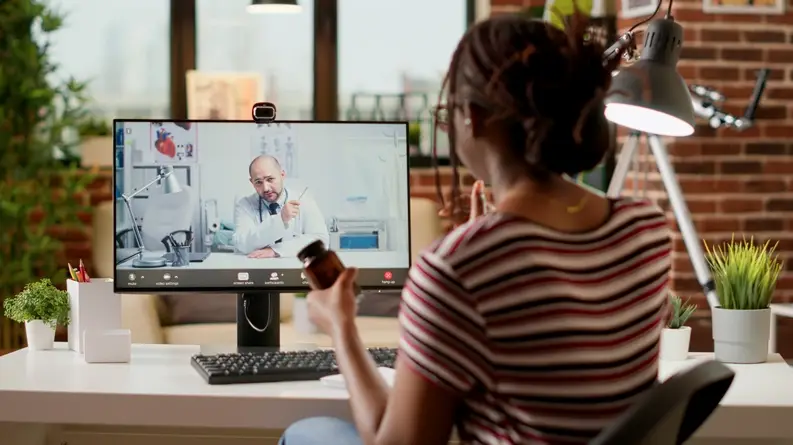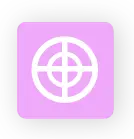Telehealth, simply put, includes the use of technology to deliver healthcare services to patients, bridging the gap between traditional healthcare and the modern era. When combined with remote patient monitoring, it becomes a powerful tool for improved patient care and the management of chronic conditions.
In this article we’ll explore the term remote patient monitoring, telehealth, the differences and similarities, and why remote patient monitoring is becoming a vital part of the future of healthcare.
Table of Contents

What is Remote Patient Monitoring (RPM)?
Remote Patient Monitoring is a way to track and manage patient health using technology outside hospitals. This technology empowers healthcare providers to monitor vital signs, health conditions, and other relevant data continuously.
For an in-depth guide to Remote Patient Monitoring click here. Alternatively, here are some key features and aspects of RPM we would like to highlight in this article:
- Vital Sign Monitoring
Remote patient monitoring devices are designed to track vital signs such as blood pressure, heart rate, oxygen levels, and more. These devices provide real-time data, allowing healthcare professionals to observe changes or abnormalities promptly.
- Chronic Condition Management
RPM is especially beneficial for patients with chronic conditions like diabetes, hypertension, or heart disease. Patients can use RPM devices to monitor their health (see chronic care management), and healthcare providers can analyze this data to make informed decisions.
- Data Collection and Analysis
Remote patient monitoring devices collect patient data and send it to healthcare facilities. This data is analyzed to assess the patient’s health status and identify any potential issues, enabling timely interventions.
- Improved Care Management
Remote patient monitoring improves patient care by allowing healthcare providers to communicate with patients and adjust treatment plans remotely. It’s particularly advantageous for individuals who may have difficulty traveling to healthcare facilities regularly.
What is Telehealth?
Telehealth is a broader concept that encompasses the use of technology to provide healthcare services and information to patients from a distance. It goes beyond remote patient monitoring and includes various healthcare delivery methods. Here are some key aspects of telehealth:
- Remote Consultations
Telehealth allows patients to have remote consultations with healthcare providers, such as doctors and specialists, through video calls, phone calls, or even secure messaging.
- Medical Advice and Education
Telehealth is not limited to consultations. It also includes providing medical advice, information, and education to patients via digital channels.
- Prescription Management
Telehealth often includes electronic prescription management, making it easier for patients to receive and manage their medications.
- Remote Diagnostics
While not as in-depth as RPM, some telehealth services may involve remote diagnostics, such as reviewing medical images or test results.
Telehealth and Remote Patient Monitoring: Differences
While both Telehealth and Remote Patient Monitoring (RPM) and are integral parts of modern healthcare delivery, they have distinct roles and features. Here’s a closer look at the differences and similarities between these two approaches:
- Scope: RPM is more focused on continuous monitoring of vital signs and health data, primarily for patients with chronic conditions, while telehealth encompasses a wider range of healthcare services, including consultations and medical advice.
- Data Collection: RPM devices collect and transmit specific health data, such as blood pressure and heart rate. Telehealth may or may not involve the collection of patient data, depending on the specific services provided.
- Purpose: Remote patient monitoring is primarily used to monitor and manage patients’ health conditions, whereas telehealth is employed for consultations, diagnosis, treatment, and general healthcare services.
Telehealth and Remote Patient Monitoring: Similarities
- Remote Access: Both RPM and Telehealth offer remote access to healthcare services, allowing patients to receive care from the comfort of their homes.
- Improved Accessibility: Both approaches improve accessibility to healthcare, especially for individuals who may face barriers to in-person visits, such as those living in remote areas or those with mobility challenges.
- Patient-Centered Care: Both RPM and Telehealth promote patient-centered care by enhancing communication between patients and healthcare providers, enabling more personalized and timely interventions.
In summary, RPM and Telehealth are complementary technologies that enhance healthcare delivery by providing remote access to medical services and data. RPM focuses on continuous monitoring of vital signs and health conditions, while Telehealth encompasses a broader range of healthcare services and consultations.
Together, they are reshaping healthcare, making it more patient-centric, accessible, and efficient.
The Future of Telehealth and Remote Patient Monitoring
The global telemedicine market has witnessed significant growth, with RPM revenue projected to follow suit. Historical patterns of healthcare trends, often influenced by Medicare’s lead, indicate that RPM is poised to become a fundamental component of patient care.
Additionally, the impact of the COVID-19 pandemic has accelerated the integration of telehealth and RPM into healthcare, marking a permanent shift towards data-driven, remote monitoring and decision-making in the future of healthcare.
- Current Research Predictions
The 2022 global telemedicine market had a valuation of $87.41 billion and is expected to increase from $94.44 billion in 2023 to a substantial $286.22 billion by the year 2030. When viewing Remote Patient Monitoring in isolation, in terms of revenue, is estimated to grow at a compounded annual growth rate of 26.7% until reaching $175 billion by 2027.
- Past Market Trends
The future of remote patient monitoring is glowing bright and RPM solutions is set to become the new standard in patient care. Often, past trends can dictate the market’s future behavior. Medicare has consistently proven to be a reliable compass guiding the way toward future healthcare advancements. Historically, Medicare has initiated innovative trends that have been subsequently adopted by major insurance companies.
This historical pattern is exemplified by past initiatives such as the Electronic Health Record (EHR) Incentive Program, commonly known as Meaningful Use, the implementation of Bundled Payments, and the establishment of Accountable Care Organizations (ACOs).
All these instances serve as compelling evidence that Remote Patient Monitoring is poised to follow a similar trajectory, becoming an integral part of the future healthcare landscape.
- The Impact of COVID
The COVID-19 pandemic accelerated the adoption of RPM telehealth by emphasizing its importance in healthcare. RPM enabled at-home care, improved healthcare accessibility, and played a crucial role in early detection and intervention for COVID-19 cases.
The integration of RPM with telehealth, policy changes, and long-term sustainability measures now position RPM as a permanent and pivotal component of healthcare delivery, offering remote monitoring and data-driven decision-making for various health conditions, shaping the future of healthcare.
Summary
A symbiotic relationship exists between Telehealth and Remote Patient Monitoring (RPM). Telehealth, at its core, leverages technology to deliver healthcare services, making it a bridge between traditional healthcare and the modern era. When merged with RPM, improved patient care and the management of chronic conditions are propelled to new heights.
As we look to the future of healthcare, it’s evident that telehealth and remote patient monitoring are pivotal components shaping the industry. To speed the implementation process, prevent overutilization of resources, and mitigate risks, providers are choosing remote patient monitoring vendors to implement RPM at their healthcare organizations.
To learn more about telehealth and remote patient monitoring, the benefits of remote patient monitoring at your practice, , how to implement such services without draining your resources, and the ROI of Remote Patient Monitoring at your practice, contact Neolytix today to schedule a free demo.
Schedule a free consultation to learn more
Complete the form, and someone from our team will contact you!



